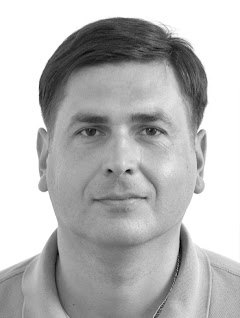Beat
In the past I’ve photographed military conflicts and now I mostly cover economic and social topics. I also work on feature photo stories.
One Shot

“The icon is a symbol of hope and salvation, which contrasts with the devastating power of nature as shown in this photo.”
Profile
My grandfather and my father were both enthusiastic amateur photographers, and through them I was introduced to the magic of developed images as a child. Even now I can remember the smell of my grandpa’s leather camera case.
I started taking photographs when I was 13, and most of my pictures were of school friends and cats. My grandfather Ivan, who was blind, showed me how to develop film and he gave me money to buy my first camera - a FED 5s.
The first pictures that I took for Reuters were not shot on assignment, but as part of a story that I covered of my own initiative. On June 21, 2002 I went to photograph a flood that was approaching the town of Nevinnomyssk, and I phoned Reuters photo editor Alexander Shtol asking if he wanted to use my pictures. He phoned me back the next day and asked me to take more shots of the aftermath, so that’s what I did.
The assignment that left the biggest mark on me was the 2004 Beslan school siege, during which militants took more than 1,200 people hostage and over 300 people died. I remember the second day of mass funerals when I stood by soil that had been dug up for a grave and saw people carrying coffins all around me. It was an absolute massacre.
My audience is everyone, no matter their age or social status.
My biggest lesson has been the importance of cooperation between photographers. In August 2004 I was covering the battle of Tskhinvali when I fell down and damaged my lens. The town was cut off and under fire from mortar-guns but my colleagues gave me a new lens and took me to a hospital. I used that lens to cover two more important events, including the Beslan school siege.
Tomas Dworzak is the photographer I respect the most for his constantly original approach and his skill with technology.
